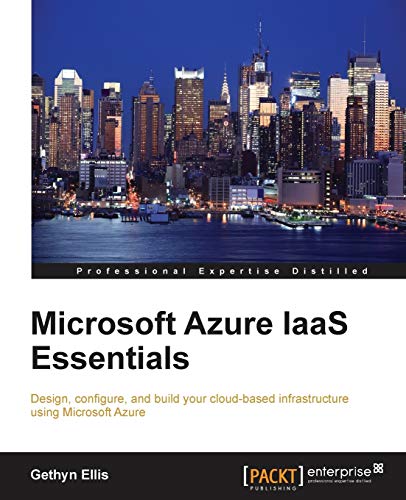

Most ebook files are in PDF format, so you can easily read them using various software such as Foxit Reader or directly on the Google Chrome browser.
Some ebook files are released by publishers in other formats such as .awz, .mobi, .epub, .fb2, etc. You may need to install specific software to read these formats on mobile/PC, such as Calibre.
Please read the tutorial at this link. https://ebooknice.com/page/post?id=faq
We offer FREE conversion to the popular formats you request; however, this may take some time. Therefore, right after payment, please email us, and we will try to provide the service as quickly as possible.
For some exceptional file formats or broken links (if any), please refrain from opening any disputes. Instead, email us first, and we will try to assist within a maximum of 6 hours.
EbookNice Team

Status:
Available0.0
0 reviews
ISBN-10 : 178217463X
ISBN-13 : 9781782174639
Author: Gethyn Ellis
This book is intended for system administrators and other IT professionals who need to both design and implement an Azure-based cloud solution. With the help of this book, you will soon master the basic tasks needed to build a cloud-based solution.
What you will learn
Deploy virtual machines on Windows Azure IaaS
Build, configure, and create Windows and Linux virtual machines
Create a virtual network that spans your onpremises network into the cloud
Monitor your virtual machines to ensure optimal performance from your cloudbased solutions
Integrate your cloudbased infrastructure with Active Directory
Discover information on Azure IaaS backup and security
Configure your cloud solution to ensure recovery from disasters
1. Introduction to Microsoft Azure Cloud Services
Understanding cloud computing
Services offered
Virtualization and on-premises technology
Software as a service (SaaS)
Platform as a service (PaaS)
Infrastructure as a service (IaaS)
Hybrid environments
Microsoft Azure
Exploring the portal
Summary
2. Creating and Deploying a Windows Virtual Machine
Creating a new Windows server virtual machine
Pricing for virtual machines
Creating a virtual machine using the gallery
Connecting and managing your new Windows server virtual machine
Starting and stopping the virtual machine
Connecting to a virtual machine in the portal
Connecting from the Remote Desktop Protocol (RDP)
Working with your virtual machine with PowerShell
Adding additional data disks to your virtual machine
Deploying an existing server to Microsoft Azure
Summary
3. Deploying Linux Virtual Machines on Azure
What is Linux?
Ubuntu
CoreOS
CentOS-based
SUSE
Oracle
Creating a Linux-based virtual machine
Working with your Linux virtual machine
Connect using Secure Shell (SSH)
Connect using Remote Desktop Protocol
Useful Linux commands
Summary
4. Virtual Networks
What is an Azure Virtual Network?
The benefits of virtual networks
The virtual network topology
A cloud-only virtual network
A cross-premises virtual network
Configuring a virtual network
Creating a cloud-only virtual network
Redeploying virtual machines into a virtual network
Configuring a cross-premises virtual network
Configuring the virtual network with a dynamic gateway
Creating certificates
Configuring the VPN client
Summary
5. Managing and Monitoring Virtual Machines
Monitoring cloud services using the Azure portal
Configuring monitoring for cloud services
Prerequisites
Creating a storage account
Azure storage replication options
The steps to create a storage account
Enabling Azure Diagnostics in a virtual machine
Adding metrics
Management services
Alerts
Operational logs
Other monitoring tools
PowerShell
System Center Operation Manager
Third-party monitoring tools
Summary
6. Microsoft Azure and Active Directory
What is Microsoft Azure Active Directory?
Azure AD editions
Configuring a standalone Microsoft Azure Active Directory
Setting up your own domain
Creating a user
Creating a group
Adding a member to the group
Synchronization of on-premises Active Directory and Azure AD
Directory Sync
Directory Sync with password
Directory Sync with single sign-on
Multi-Factor Authentication
Summary
7. High Availability and Disaster Recovery for Azure Virtual Machines
Microsoft Azure High Availability
System availability
System scalability
Redundancy and fault tolerance
Azure virtual machine downtime and availability
The multiple-tier architecture
Availability Set – Azure Internals
Configuring an Availability Set
Creating an Availability Set when provisioning a virtual machine
Creating a new Availability Set for an existing virtual machine
The Microsoft Azure load balancer and Availability Set
Microsoft Azure as a Disaster Recovery site
microsoft azure iaas paas saas
microsoft iaas examples
microsoft azure iaas or paas
microsoft iaas offerings
iaas microsoft
Tags: Microsoft Azure, IaaS Essentials, Gethyn Ellis,